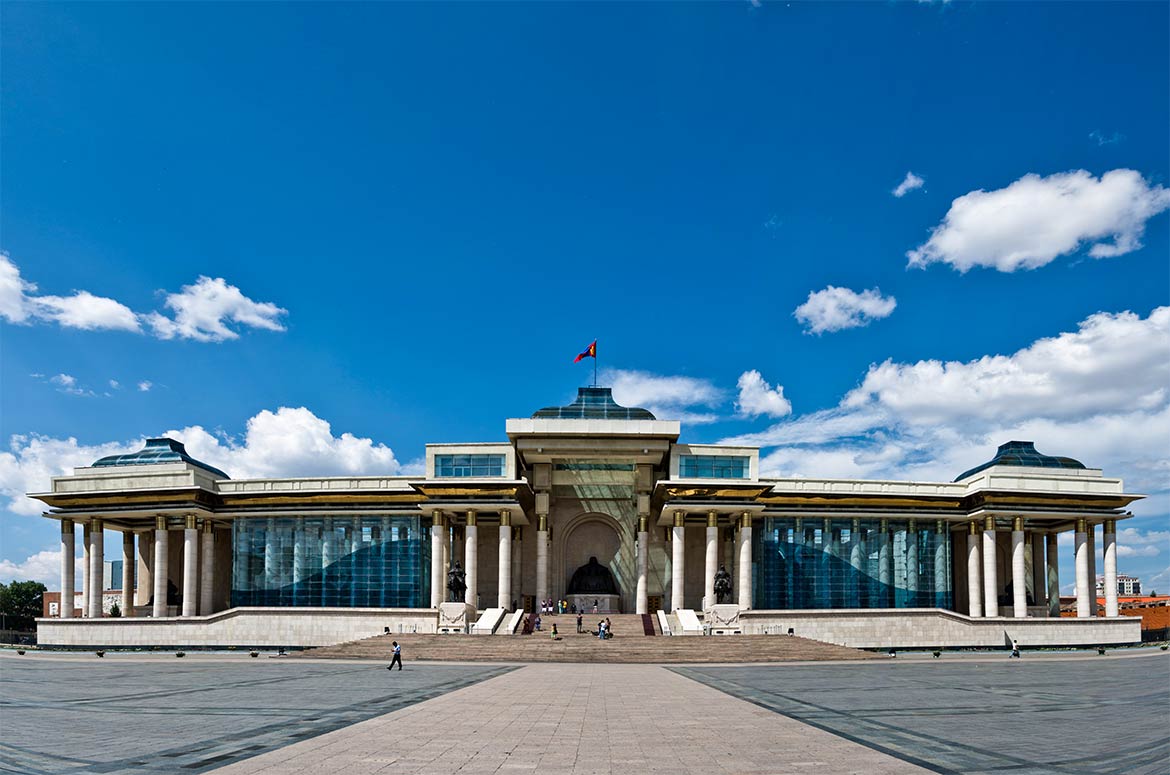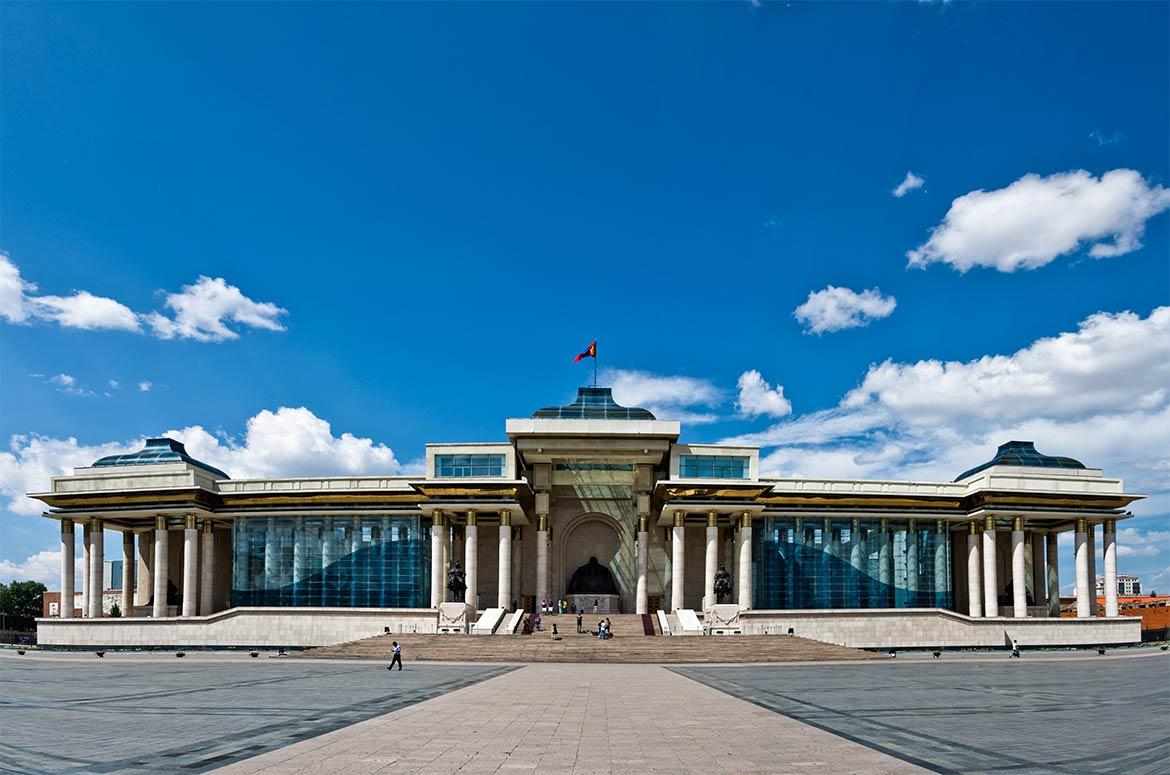
South Side of the Government Palace in Ulaanbaatar on Chinggis Square.
Mongolia hopes to take advantage of its strategic position between China and Russia to ensure its development. In November 2014, Tsakhiagiyn Elbegdorj, the then President of Mongolia, unveiled his “steppe route” program, which planned the construction of road links between its two neighbors and the development of the power grid. This national program must then be integrated into China’s Belt and Road initiative (BRI), as announcedy the authorities of the two countries on several occasions.
One of the corridors of this initiative linking China to Russia is passing though Mongolia. The Belt and Road initiative aims to improve transport and communication infrastructure between China and Mongolia. But this cooperation also includes other sectors. China is now the largest investor and trading partner of Mongolia and since 2014 the two countries are bound by a strategic partnership.
Mongolia, historically Outer Mongolia, country located in north-central Asia. It is roughly oval in shape, measuring 1,486 miles (2,392 km) from west to east and, at its maximum, 782 miles (1,259 km) from north to south. Mongolia’s land area is roughly equivalent to that of the countries of western and central Europe, and it lies in a similar latituderange. The national capital, Ulaanbaatar(Mongolian: Ulan Bator) is in the north-central part of the country.
Mongolia can be divided into three major topographic zones: the mountain chains that dominate the northern and western areas, the basin areas situated between and around them, and the enormous upland plateau belt that lies across the southern and eastern sectors. The entire country is prone to seismic movements, and some earthquakes are extremely severe. Their effects, however, are limited by the low population density.




 A single purchase
A single purchase









